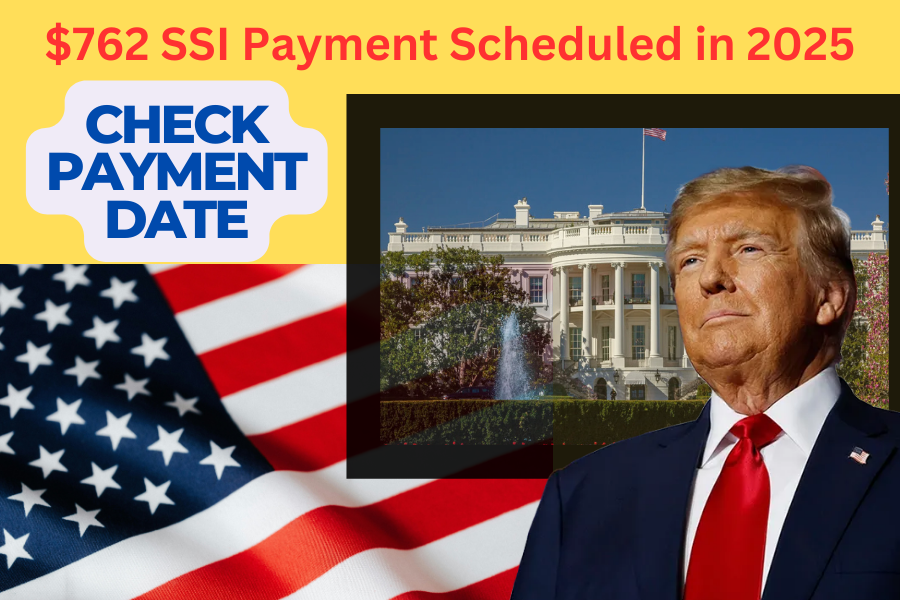In 2025, eligible Americans can receive up to $762 per month as Supplemental Security Income (SSI) to meet basic needs. Understanding who qualifies, when payments will be issued, and how to apply is essential. Let’s break it down in simple terms.

Understanding Supplemental Security Income (SSI)
SSI is a federal program that provides financial aid to low-income individuals who are elderly, blind, or disabled. Unlike Social Security benefits, SSI is funded through general tax revenues rather than payroll taxes. This program ensures a basic level of income for those who might not have a work history that qualifies them for Social Security.
In 2025, the monthly federal benefit rate will be $762 for individuals and $1,145 for couples. This increase, due to the Cost-of-Living Adjustment (COLA), helps recipients keep up with inflation and rising living costs.
Who Can Receive the $762 SSI Payment?
To qualify for SSI, individuals must meet strict criteria:
Age Requirement:
- You must be 65 or older.
Blindness or Disability:
- Individuals of any age can qualify if they are blind or have a disabling condition that prevents them from working. This condition must be medically verified.
Income and Resource Limits:
- Income Limits: Countable income must be below $762 monthly. The first $20 of income is excluded from calculations, known as the “general income exclusion.”
- Resource Limits: Individuals can have up to $2,000 in assets ($3,000 for couples). Excluded resources include your primary home and one vehicle.
Mary, a 67-year-old retiree with $500 monthly income and $1,500 in savings, qualifies as her income and resources are below the limits. Similarly, John, a 45-year-old blind individual, qualifies due to his condition and limited resources.
Payment Schedule for SSI in 2025
SSI payments are typically issued on the 1st of each month. If the 1st falls on a weekend or holiday, payments are made on the prior business day. Beneficiaries should plan ahead to ensure their expenses are covered without delay.
| Month | Payment Date | Reason for Adjustment |
|---|---|---|
| January | December 31, 2024 | New Year’s Day (Holiday) |
| February | February 1, 2025 | Regular Payment Date |
| March | March 1, 2025 | Regular Payment Date |
| April | April 1, 2025 | Regular Payment Date |
Beneficiaries can set up direct deposit to ensure timely and secure receipt of their payments. This is especially important for those relying solely on SSI for their monthly expenses.
How to Maximize SSI Benefits
Keep up-to-date with changes in income limits and resource requirements to ensure continued eligibility.
Other Assistance Programs:
- Medicaid: Offers healthcare coverage for SSI recipients.
- SNAP (Supplemental Nutrition Assistance Program): Provides food assistance to low-income individuals and families.
Many banks offer alerts for direct deposits, helping you stay informed when your SSI payment arrives.
If you encounter issues during the application process or need to appeal a denial, non-profits and legal advisors can provide support. Many organizations offer free or low-cost services to SSI applicants.
How to Apply for SSI Benefits
If you think you qualify for SSI, follow these steps:
Documents Required:
- Proof of age
- Social Security Number (SSN)
- Proof of U.S. citizenship or legal residency
- Financial records
- Medical documentation if applying for disability
Submit Your Application:
- Online: Visit the Social Security Administration’s (SSA) website and complete the application.
- Phone: Call 1-800-772-1213 for assistance or to schedule an appointment.
- In-Person: Visit your local Social Security office for face-to-face support.
Track Your Application:
You can monitor the progress of your application online or by contacting the SSA. Disability claims may take longer to process due to medical evaluations.
The $762 SSI payment in 2025 is a vital support system for millions of Americans. For further details, visit the Social Security Administration.
